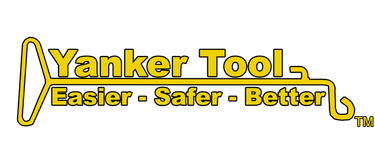Semi Truck 5th Wheel Fixed vs Sliding – Differences and Applications
Over the years, you might have heard conflicting opinions when it comes to whether a fixed or sliding fifth wheel is the best for a semi. It’s a complex topic and there’s a lot to consider. Here’s a closer look at what fifth wheels are and the pros and cons of a fixed versus a sliding fifth wheel.
What Is a Fifth Wheel?
The term “Fifth Wheel,” follows from the days of horse-drawn wagons that had 4 wheels. The “5th wheel” was the front axle pivot mechanism that allowed the front axle of the wagon to be turned side to side, steering the wagon, as pulled by the horse(s). The semi-tractor now does both: the pulling the horses used to do, and; the steering the front axle of the wagon did. The device that allows the wagon/trailer to turn is still called the 5th wheel. Many other trucking terms follow from the days when wagons were called ‘rigs,’ and wagon drivers were known as ‘teamsters’ because they drove the team of horses pulling the wagon. Freight transportation is as ancient and historical as trading and commerce.
The fifth wheel joins together the 2 vehicles, tractor and trailer, to compose 1 combination vehicle, the semi truck, or the ‘rig.’
A Fifth Wheel is the mechanism that connects the tractor to the trailer. It allows the articulation between the combined 2 vehicles, the ‘rig,’ facilitating steering the vehicle. It spreads the weight of the freight load between tractor and trailer.


Identify Fixed vs Sliding
A Fixed Fifth Wheel is mounted to the frame of the tractor without the ability to move it forward and backward along the frame rails.

A Sliding Fifth Wheel is mounted to the frame with the ability to slide the 5th wheel forward and backward along the frame rails.

WHY FIXED vs SLIDING?
There are 2 primary considerations that indicate whether a fixed or sliding fifth wheel installation is appropriate. The key question is: are the loads uniform, or are the loads variable?
A fixed 5th wheel is suited for hitching to, and pulling similar trailers with consistent loads. Here, the weight across all the axles of the rig does not change significantly, load to load. Let’s call this a uniform tractor/trailer/load configuration. Bulk or tank carriers are examples.
A sliding 5th wheel is suited for hitching to, and pulling different trailers, weighing differently, with different weight distributions. The weight across all the axles of the rig may change, sometimes very significantly, load to load. Let’s call this a variable tractor/trailer/load configuration. Most loads are variable, not uniform, so most tractors are equipped with sliding 5th wheels.
The fixed 5th wheel restricts the flexibility to haul a variety of freight, with un-uniform weight distribution. The sliding 5th wheel allows the truck to haul a wider variety of freight, loaded un-uniformly onto the trailer.
Tractor Axel Weight Limits
There are weight limits for each axle of the tractor. Tractors have a “steer” axle in the front, and either 1 or 2 “drive” axles in the rear, generally. The front (steer) axel is normally limited to 12,000 pounds of weight. The rear (drive) axles are normally limited to 20,000 lbs for a single axle, and 34,000 lbs for dual axles.
Weight on the Tractor
When a trailer is hitched to the tractor, with a load on the trailer, the weight of the load on the tractor at the 5th wheel, called the ‘tongue weight,’ will then be shared or distributed across the axles of the tractor, as well as the trailer.
The tongue weight of the trailer on the 5th wheel, and therefore onto the tractor axles, can be uniform or variable.
Generally, each uniform load will be distributed across the axles of the tractor consistently, load to load. The location of the fixed 5th wheel will be permanently set at the ‘sweet spot’ on the frame that results in proper weight distribution onto the tractor axles for those uniform loads.
Generally, each variable load is unique, with unique weight, and unique weight distribution over the length of the trailer. Consequently, that unique load will have a unique tongue weight, and unique load impact on the axles of the tractor, via the 5th wheel. There may be more weight in the front of the trailer vs the center, or the rear, of the trailer. So, loads can be quite variable by weight, and weight distribution.
Moving the sliding 5th wheel, which bears the tongue weight, forward and backward, adjusts how much of the weight ‘sits’ on each of the axles of the tractor, and, consequently, the axles of the trailer too. This adjusts the weight distribution within the weight rules for the tractor (12,000 # front axle and, the 20,000 # rear axle, or the 34,000 # rear tandem axles), in harmony with the weight on the trailer axles, which also have similar 20,000#/34,000# weight limits.
You may have noticed at a truck stop, a rig going on and off the long truck scale repeatedly. The scale measures the weight of each axle of the rig. The driver will weigh, adjust the sliding fifth wheel, and then re-weigh the rig. S/he is seeking the correct weight distribution of the tractor, the trailer, and the load across all of the axles.
To conclude, the need for a fixed or a sliding 5th wheel depends on whether consistent or variable tongue weight loads are to be carried.
